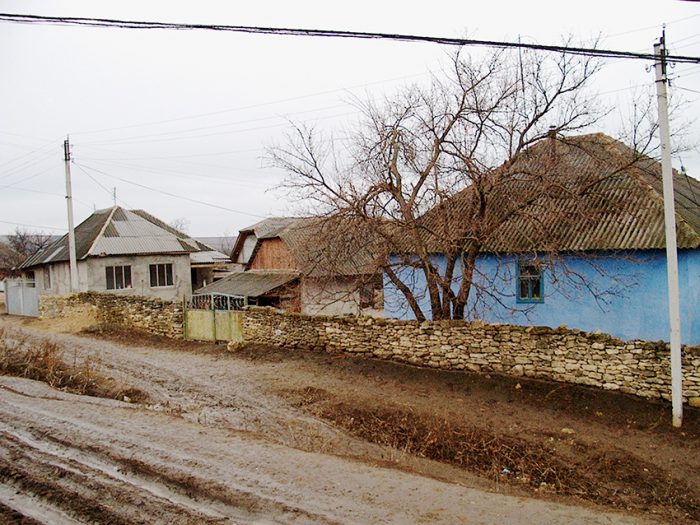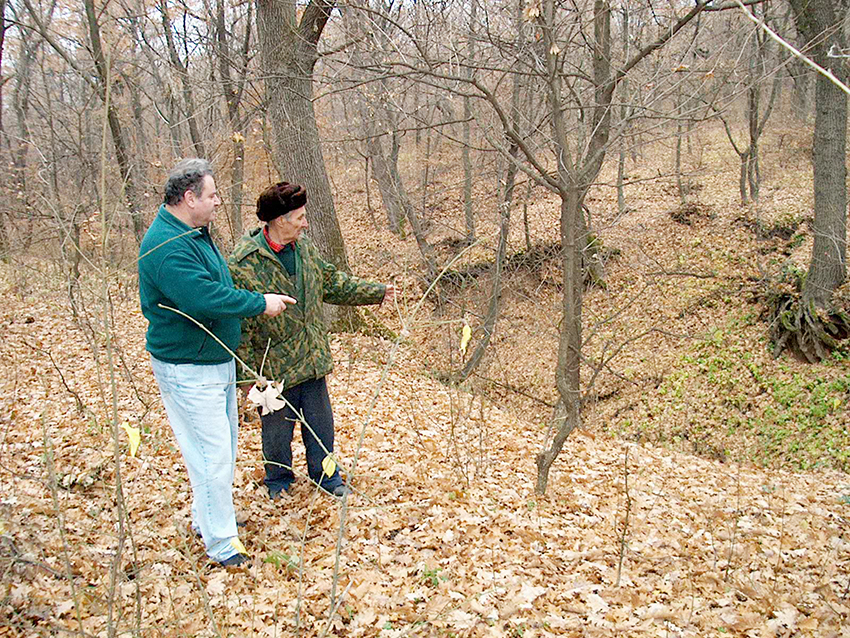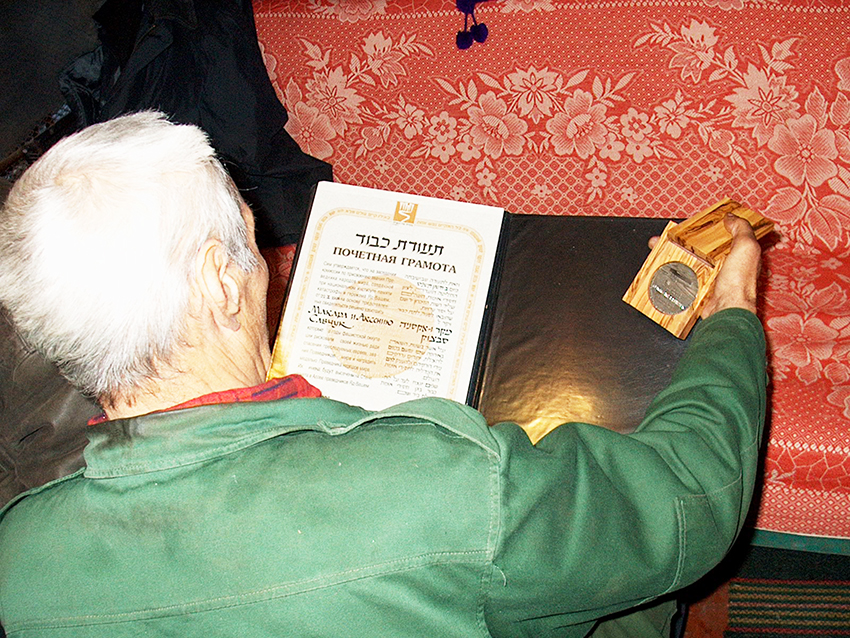Camps, ghettos, killing of millions of Jews in Europe during the World War II.

That is the Holocaust of the European Jewry consisted of genocide and extermination in towns and cities, in villages and shtettles. This is how it was in the small village of Bulaesti, 28 km from the town of Orhei.
The village was captured by Romanian troops in August 1941. The same month the Jews of Bulaesti were shot.
The executions took place in the forest to the south from the village. Eight Jews were shot n the wood in 500-600 meters from the sign with the name of the village:
Nitoker Abram, 62 years old;Nitoker Brukha, 50;
Nitoker Basia, 28;
Schfartz Sheindla, 73;
Shfarts Ziyeka, 55;
Shfartz Rachel, 40;
Shfarts Lyuba, 8;
Schfartz Gidali, 5
Twenty-year-old David Rosenfeld was killed in a ravine 30-40 meters from the entrance to the village.
In November 1944, the Nazi victims were reburied at the Orhei Jewish cemetery.

On the photo: Afanasy Savchuk and Semyon Rappaport, leader of the Orhei Jewish community, at the place of execution (2005).
Still there were happy occasions when Jews were saved, thanks to humanity and courage of some local residents.
Thus, the Tselnik family from the town of Grigoriopol, who fled from the Nazis to the right bank of the Dniester, came to the village of Bulaeshty, where they were sheltered by Petr and Yevgenia Tsurcan, as supposedly refugees from Donbass. The Tsurcans understood that the refugees were Jews, but they responded to the mother’s tears. Petr and Yevgenia hid Sarah and her children – Frida, Dvoira and Naftuli – in the basement and the attic of their house.
At the end of the summer of 1942, the family moved to Makar and Aksenia Savchuk, relatives of Petr and Yevgenia, residents of the same village. Frida and Naftuli, who had a vivid Jewish appearance and accent, hid in the house. It was hard for a 13-year-old boy to stay in a closed place, so sometimes he played in the yard with Afanasy, the Savchuk’s son. One day local policeman saw him. Then Makar acted as a drunk and started a fight with the policeman. The same night, Sarah and children moved to an abandoned house at the edge of the forest, where they remained until liberation in March 1944. All this time Tsurkan and Savchuk families brought them food.
After the war, the Tselnik family returned to Grigoriopol and kept in touch with their saviors. Later they emigrated to the United States.

On October 22, 1998, Yad Vashem recognized Petr and Yevgeniya Tsurkan, Makar, and Aksenia Savchuk as Righteous among the Nations.